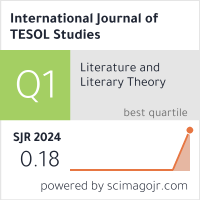2632-6779 (Print)
2633-6898 (Online)


Scopus
Ulrich’s Periodicals Directory (ProQuest)
MLA International Bibliography
MLA Directory of Periodicals
Directory of Open Access Journals (DOAJ)
QOAM (Quality Open Access Market)
British National Bibliography
WAC Clearinghouse Journal Listings
EBSCO Education
ICI Journals Master List
ERIH PLUS
CNKI Scholar
Gale-Cengage
WorldCat
Crossref
Baidu Scholar
British Library
J-Gate
ROAD
BASE
Publons
Google Scholar
Semantic Scholar
ORE Directory
TIRF
China National Center for Philosophy and Social Sciences Documentation
Akihiko Sasaki
Mukogawa Women's University, Japan
Osamu Takeuchi
Kansai University, Japan
Abstract
Frequent and regular engagement is essential for effective e-learning, and self-regulated learning strategies play a crucial role in enhancing such engagement. However, recent research has suggested that learners may initially rely on other-regulated strategies, eventually transitioning to self-regulation. This study examines the impact of Time and Study Environment Management (TSEM) strategy instruction on students’ e-learning behaviors, particularly in reducing procrastination, and explores whether it initially promotes other-regulated strategy use, which evolves into self-regulation. Japanese university students participated in a two-semester e-learning assignment as an out-of-class activity. Group A received TSEM instruction in the spring semester, while Group B did not. Neither group received instruction in the fall. Students’ e-learning behaviors were measured through login frequencies, and their strategy use was assessed via interviews. Results showed that in the spring semester, Group-A students initiated learning earlier and completed tasks well before the deadline, whereas Group-B students procrastinated. In the fall, both groups tended to complete tasks at the last minute. Interviews revealed that Group-A students applied TSEM strategies when receiving instruction but tended to forget them once guidance was removed. However, some students continued using TSEM strategies independently, reflecting on the benefits they experienced when applying them in the spring semester. These findings suggest that other-regulated TSEM instruction can promote autonomous learning behavior. Furthermore, fostering a sense of accomplishment and perceived value of these strategies may encourage sustained use, supporting the transition to self-regulated strategy use.
Keywords
e-learning, self-regulation, other-regulation, learning strategies, Time and Study Environment Management (TSEM)